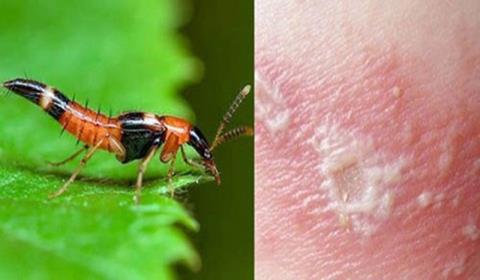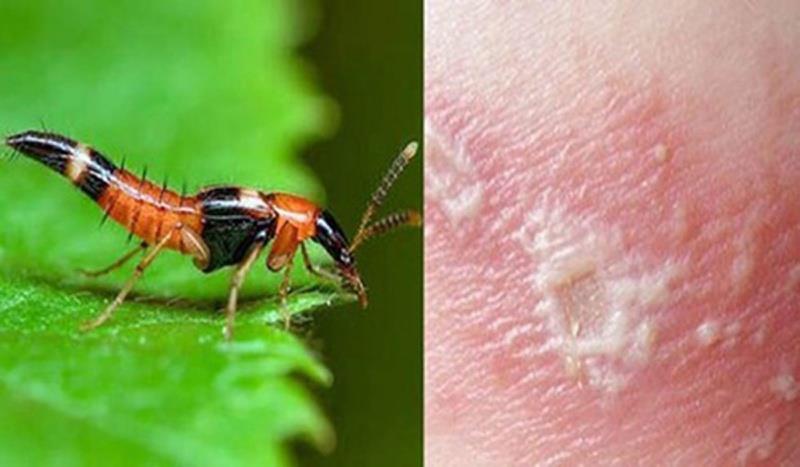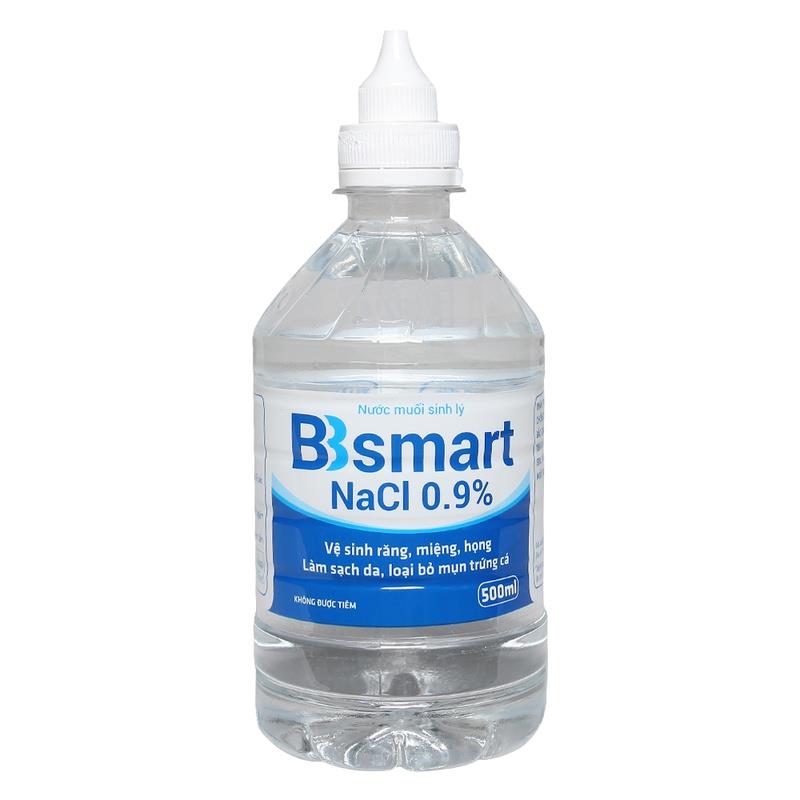Instructions for treating wounds caused by three-cavity ants

Wounds caused by ants if not handled in time will cause serious consequences, causing damage to the skin, causing unnecessary consequences.
When being bitten by three-cavity ants, if the victim does not handle the wound due to the three-cavity ant in time, it will seriously affect the skin. Therefore, it is necessary to have an effective way to prevent three-chambered ants at home.
Recognizing the wound caused by the three-cavity ant sting
The Department of Preventive Medicine has warned that the three compartments of ants contain pederin poison, which is 15 times stronger than snake venom. Even if you haven't been bitten by three-cavity ants, just coming into contact with their venom will cause skin damage.
When being bitten by three-cavity ants or unfortunately sticking to the skin with venom, the first feeling is a burning sensation on the spot. Wounds caused by three-compartment ants are basically red, concentrated in patches or large streaks. In the middle of the lesion, there is a slightly concave yellow-brown area, round or oval.
In case of large and widespread lesions, the patient may have a mild fever and swollen lymph nodes nearby.
How to treat wounds caused by three-cavity ants
The three-chambered ant contains a poison 15 times stronger than the venom of a snake.
The venom of the three-compartment ant has a rather slow effect. After 2-6 hours of exposure to the venom, the damaged skin will swell, slightly irritated, forming a streak of 1-5cm in size, 3-4mm in width. The lesion area has a distinct border, streaked with purple-pink discoloration.
 The three-chambered ant contains a poison 15 times stronger than the venom of a snake
The three-chambered ant contains a poison 15 times stronger than the venom of a snake
After 1-3 days, blisters appear on the skin, speckled in the form of pus-filled blisters. At this time, the surrounding skin areas that touch the three-chambered ants will form symmetrical lesions.
Lesions begin to reduce burning, scabbing after 3-5 days from the time of contact with three-compartment ant venom. About 7-10 days later, the scab will peel off but will leave a long-lasting bruise.
However, in some isolated cases, areas of skin affected by ants can develop into a second wave of infection - a skin infection.
In addition, the damaged skin can turn into dark spots, known as "triple ant's eye". This lesion usually occurs when a person presses on an ant's body and comes into contact with their plasma (body fluid or blood).
Distinguishing wounds caused by ant stings from skin diseases
In fact, many people confuse ants with common skin diseases.
Lesions on the skin caused by ant stings often appear suddenly after waking up in some open skin areas such as neck, arms, legs... can appear in closed skin areas but less often.
Wounds caused by three-compartment ants are swollen, inflamed, red, like a scratch, tend to last long with a burning sensation, mild edema.
Especially, after 1-3 days, blisters appear, festering but less itchy, often confused with shingles or chicken pox.
Shingles dermatitis often recurs in patients who have had chickenpox. The initial symptoms of the disease are a mild fever of about 38 degrees, headache, fatigue, spine pain, pain along the nerves in the area that is about to be damaged.
 Vesicles caused by shingles often grow in clusters
Vesicles caused by shingles often grow in clusters
Vesicles caused by shingles often grow in clusters, if you look closely, you can see the middle concave on the surface of the blisters. Patients usually feel pain and burning rather than itching in the affected area.
Shingles dermatitis is caused by the maggot insect, which causes redness, swelling, and burning. Lesions can be found at any location caused by insects and can heal on their own after 5-7 days.
The damaged skin area is red, swollen and burning, which is the reason why patients confuse the three burning chambers with the common dermatitis diseases above.
Instructions on how to treat wounds caused by three-cavity ants
Doctors recommend that each family should have 70 degrees of alcohol (or 90 degrees of alcohol), Gentrison fat (corticoid), and Phenaegan fat to handle when being burned by ants.
First of all, when detecting a wound caused by stinging ants or coming into contact with their venom, it is necessary to clean the wound as quickly as possible. It is best to wash with clean water and soap to disinfect, then dry and disinfect again with alcohol. While washing should only gently rub in the wound area and rinse under the tap, not rub vigorously and spread to the surrounding area. Disinfect the wound as quickly as possible to limit the effect of the venom on the skin as well as limit future damage.
Some drugs can be used to apply when being bitten by ants
Use medical cotton soaked in physiological saline or 70 degrees alcohol to wash the damaged skin area due to the three compartment ants. You can use a cotton swab to apply the paste to soothe the wound.
Then, dry the wound caused by ants, apply corticosteroids 4-6 times a day and apply Phenaegan ointment 8-10 times a day alternately. Note that when applying the medicine, you should pat the affected skin gently until the medicine is dry to help the drug penetrate better.
 Use medical cotton soaked in physiological saline to wash
Use medical cotton soaked in physiological saline to wash
If the wound spreads and gets worse, it is necessary to seek medical attention for timely treatment. When being bitten by ants, it is necessary to abstain from scratching. When bathing, care should be taken to avoid spreading the wound and causing infection.
In case of ant stings in the eyes or genitals, you should go to the hospital for careful examination and treatment. If not treated properly, the wound can be serious, affecting the cornea, genital sores.
When detecting trident ants on the body, do not directly kill or rub them on the skin to avoid further venom. Do not use your hands to make direct contact with the three-chambered ants. If you accidentally touch ants or have come into contact with their fluids, you should quickly wash them with soap.